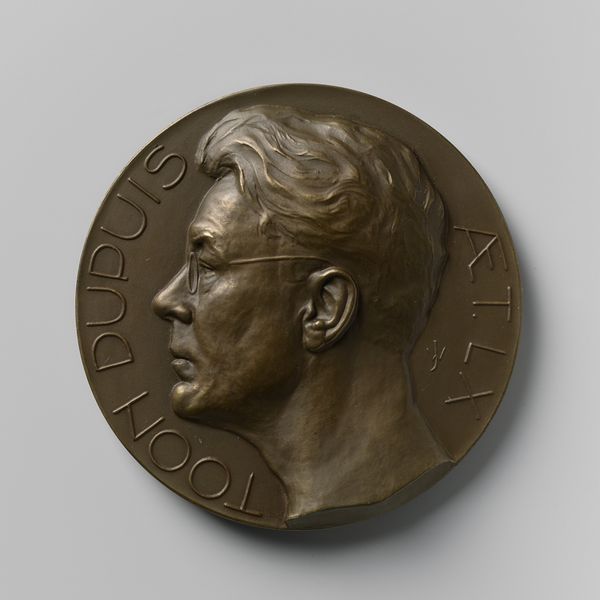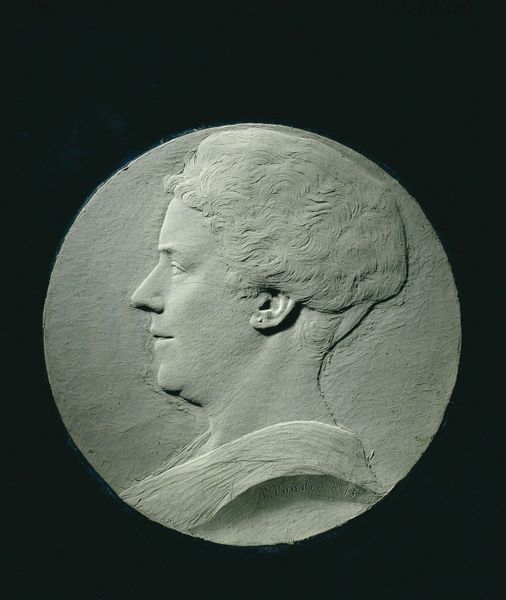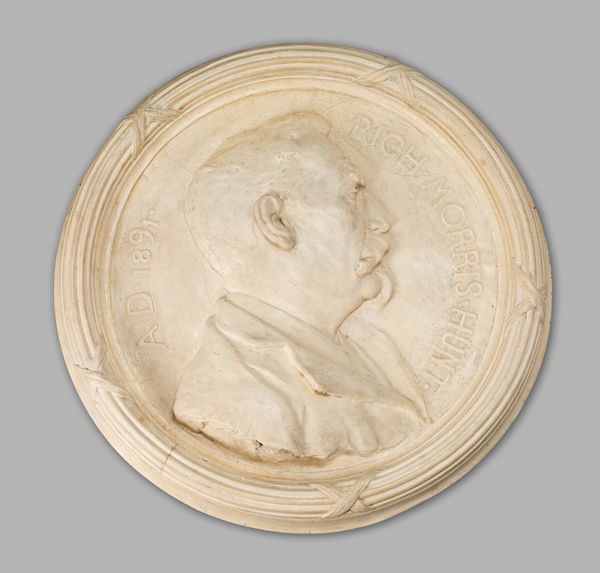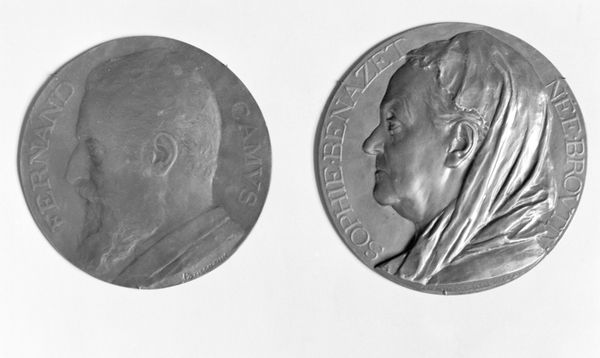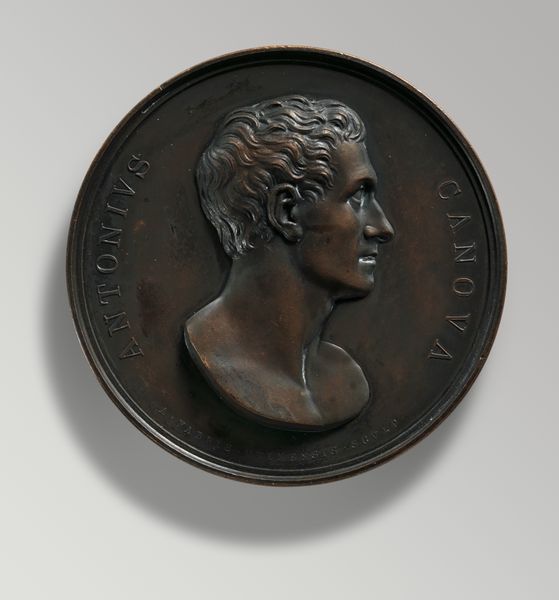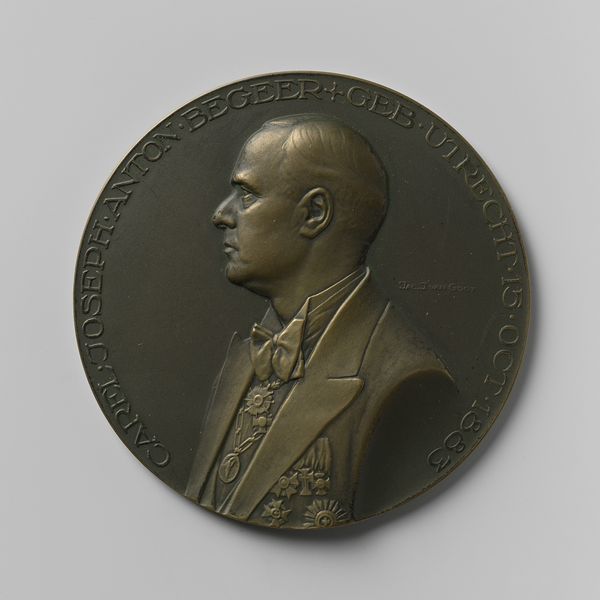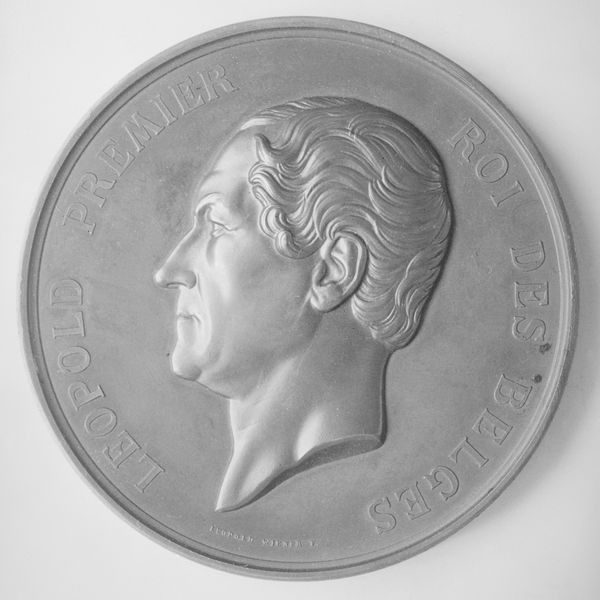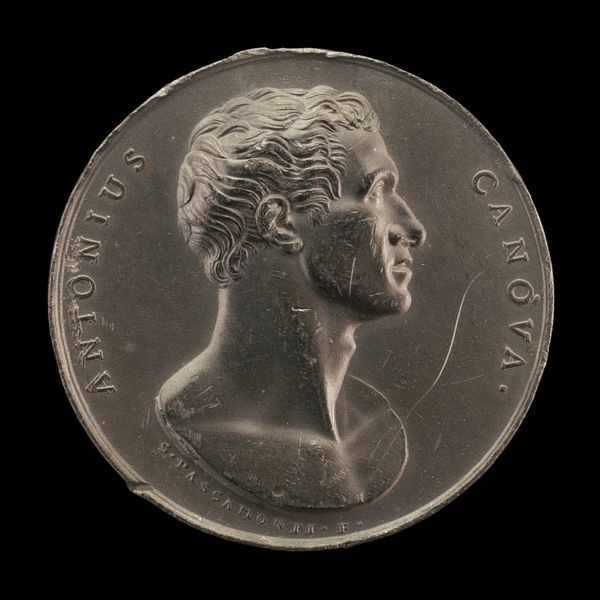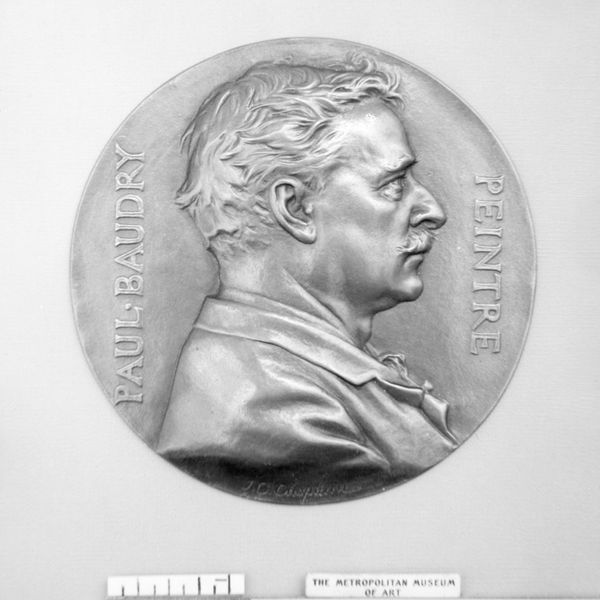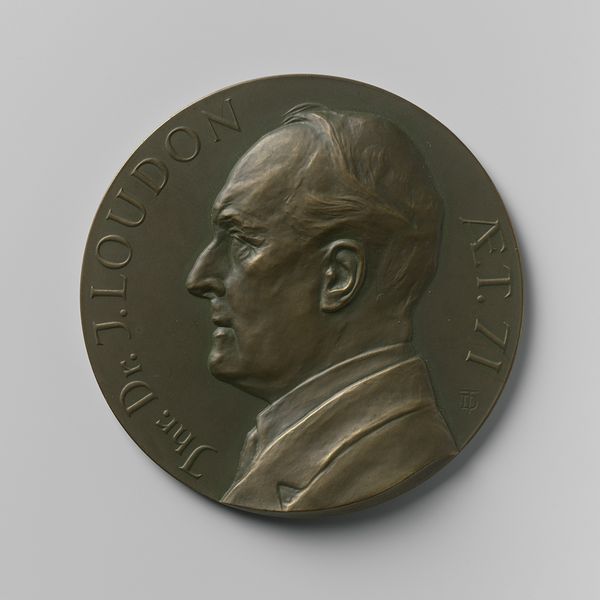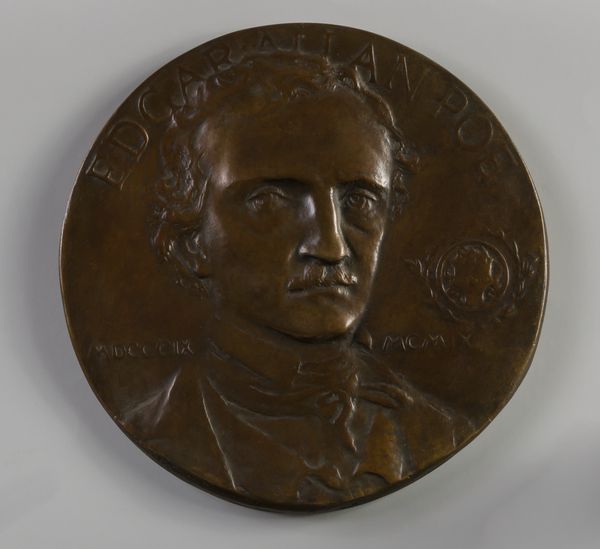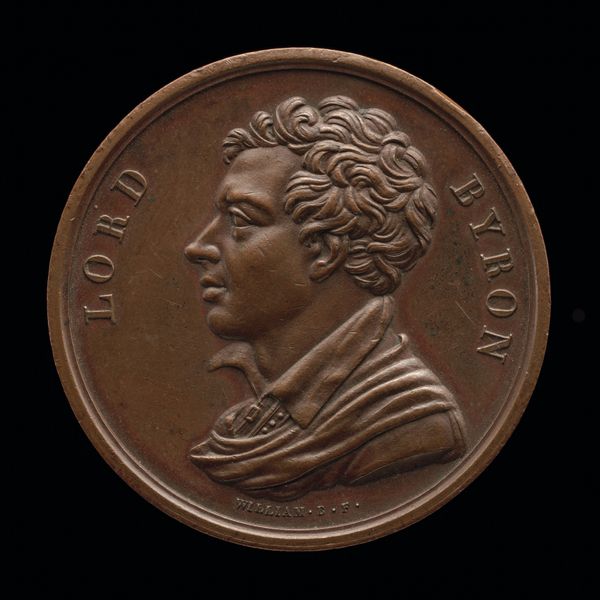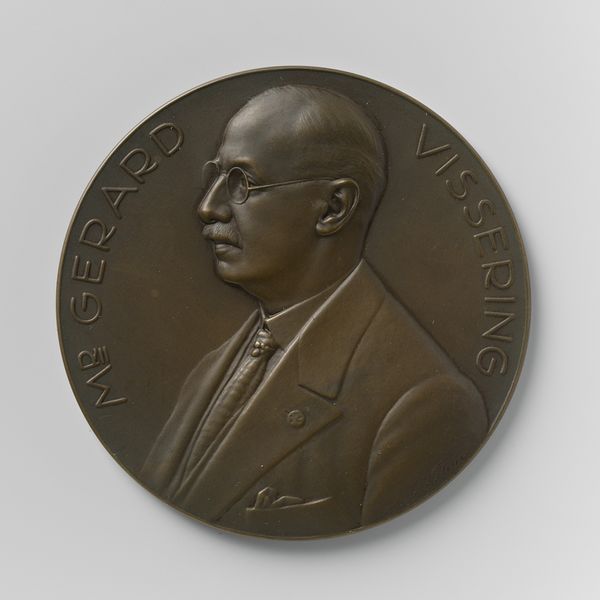
relief, bronze, sculpture
#
portrait
#
stone
#
sculpture
#
relief
#
classical-realism
#
bronze
#
sculpture
#
realism
#
statue
Dimensions: height 49.7 cm, diameter 32 cm
Copyright: Rijks Museum: Open Domain
Curator: This bronze relief, crafted in 1914 by Pier Pander, portrays Willem Mengelberg, the celebrated conductor. Editor: There's a serene quality to this portrait, isn’t there? The high relief creates a compelling shadow, softening what could be a very formal, almost rigid composition. Curator: Indeed. Mengelberg was a significant figure in the Amsterdam Concertgebouw Orchestra, shaping its sound and reputation. The sculpture reflects his status; portraiture at the time often served as a marker of social standing and influence within cultural institutions. How interesting that you bring up its almost rigid quality; given his post as a conductor, rigidity was very much part of his role! Editor: Considering Mengelberg’s later associations with the Nazi regime during the Second World War, though, I can’t help but read this image differently. The neutrality in his expression now seems chilling. Does it speak to a deliberate construction of identity? Curator: That’s a valid interpretation, particularly considering the role of art during wartime. Public perception was often swayed by imagery. However, looking at Pander, we must not overlook the context. Pander had ties with the Dutch fascist party himself, meaning this sculpture becomes increasingly more interesting as the social role of imagery. The artwork may even be seen as a celebration, rather than a purely celebratory piece for his impact as a conductor. Editor: Exactly! Even the choice of classical-realism as a style connects him, by way of antiquity, with images of heroism. Curator: Precisely. Looking at his expression, what could simply be an aristocratic aloofness might also be a sign of great moral ambiguity when observed with contemporary eyes. Editor: Absolutely. By placing this sculpture within a network of social, historical, and political contexts, its aesthetic beauty unravels some critical questions about public art. Curator: Yes, reflecting on its creation allows one to ask themselves whether it would it be as highly valued now if people knew that those in charge promoted fascism?
Comments
No comments
Be the first to comment and join the conversation on the ultimate creative platform.
